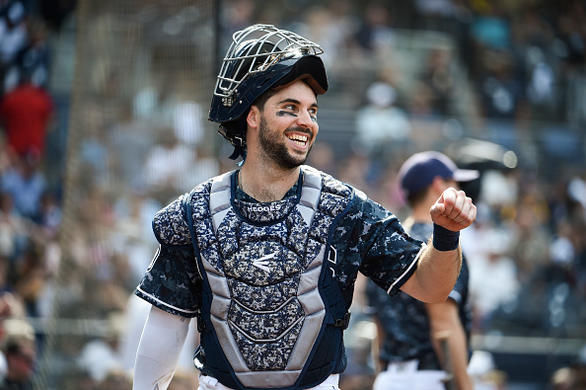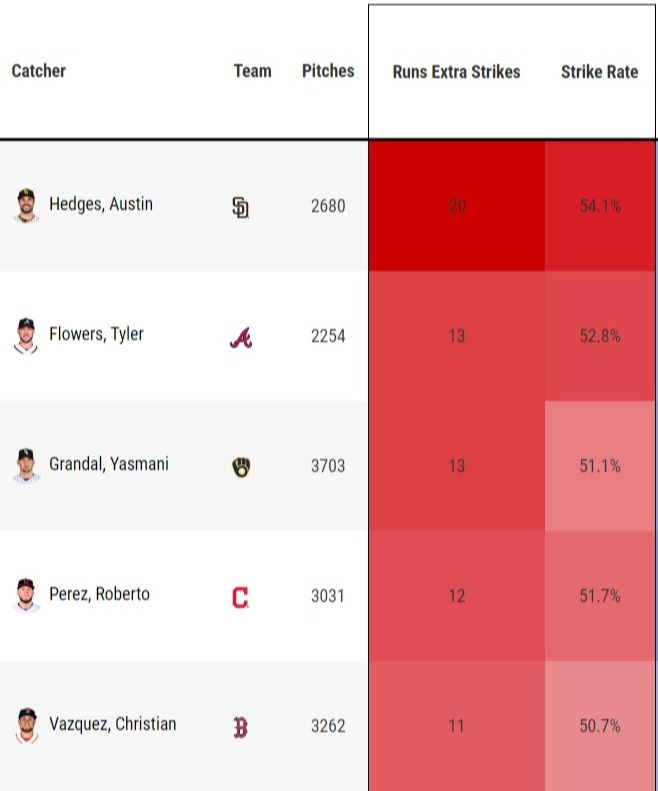Building The Perfect Defender: Catcher Edition
- Nick Fichtner

- Jul 6, 2020
- 3 min read
Updated: Jul 15, 2020

When we think about the catcher position, what do we think of first? For some it's the "Buster Posey Rule" or an amazing throw that was delivered on a line to second for a critical out. For the purposes of this article, we focus on play behind home plate as we attempt to build the perfect defensive catcher.
While offense is important, as it always will be, a backstop should be able to display elite fielding skills when necessary. For our analysis, we highlight several key components that help a catcher be successful with their glove. They include Arm Strength, Pop Time, Catcher Framing and Run Saving. To determine our player selections for each category, we turn to player development data from the 2019 season to choose which players best-fit these categories. From there, we conclude with the formal archetype of the perfect defensive catcher.
Now that we have set the table, let's eat.
Arm Strength: Francisco Mejia
Here's a fun fact for you: Amongst catchers who threw to second base at least five times in 2019, Francisco Mejia recorded the strongest arm, averaging 88.6 mph on those throws. It was stronger than that of J.T. Realmuto (88.4 mph), Jorge Alfaro (88.2 mph) and Gary Sanchez (87.7 mph).
Acquired via trade from Cleveland in 2018, he is a promising prospect and adds to an already defensively-minded backstop core in San Diego. It's always important to have a catcher who is able to quickly pick-off a runner attempting to steal a base. In this context, Mejia's arm proves to be invaluable for both the Padres and our quest for perfection.
Pop Time: J.T. Realmuto
One of the more complete players at this position in the game, J.T. Realmuto is severely underrated in his "quick-twitch" behind the dish. Adjusting our parameters slightly to a minimum of ten throws to second base, the Phillies' star was highly effective, relative to his peers:

Realmuto's ability to quickly throw the ball to the desired base provides him with a premium over most catchers in the Majors. He is the only backstop in the game that has a pop-time below 1.90 seconds, which may result in extra outs. There is a reason why Philadelphia traded for Realmuto, and his quickness is perfect for our formal archetype.
Catcher Framing: Austin Hedges
When we talk about catcher framing, it refers to how catchers convert pitches that would be balls into strikes by "framing" them into the strike zone to give the appearance that they were a formal strike.
In accordance with Figure Two below, and courtesy of Baseball Savant, this ability can be quantified by two metrics: Runs Extra Strikes and Strike Rate. The former converts strikes to runs saved and the latter shows the cumulative total of all zones as a percentage.
Amongst catchers that called at least 1,500 pitches in the 2019 season, Austin Hedges was elite by a significant margin:

By way of his framing, Hedges saved a league best 20 runs saved at a rate of 54.1%, which was also tops in 2019. Another Padre backstop on our list, he presents a unique premium in this area. The trend in the modern game is that teams are willing to sacrifice production from the bat for production on defense. His abilities fit into how a catcher should operate behind home plate. With that said, Austin Hedges' framing is something that every franchise should see from a defensive catcher.
Run Saving: Roberto Perez
Saving runs is highly beneficial to increase a team's probability of winning, this should go without saying. However, it seems that people undervalue the catcher position in this context. This capability is a layered one, as runs can be prevented in a myriad of ways, particularly behind home plate.
Quantified by the Fangraphs metric, Defensive Runs Saved (DRS), we reference Figure Three below to show that Roberto Perez is the best in baseball in this area:

Cleveland's starting catcher outpaced the field in the 2019 season, as Perez went on to win a Gold Glove and is regarded as a perennial defender. Being +30 runs above average is highly impressive, particularly if you are behind home plate and can be attributed to versatility. Perez's skills are unique and fit in the mold of our perfect backstop.
The Perfect Defensive Catcher
Now that we have defined our elements, along with the players that best-fit them, we now present The Launch Angle's perfect defensive catcher:

This type of player has a cannon of an arm that can propel the ball 127 feet to the infielder for the crucial out, has tremendous quickness, can frame errant pitches into favorable called strikes and has the ability to help his team in run prevention. For this case study, we believe that this is the ideal defender that every team wants behind home plate.
Thank you so much for choosing The Launch Angle for some out-of-the-box baseball analysis! If you liked this article, click on this link for our last post.






Comments